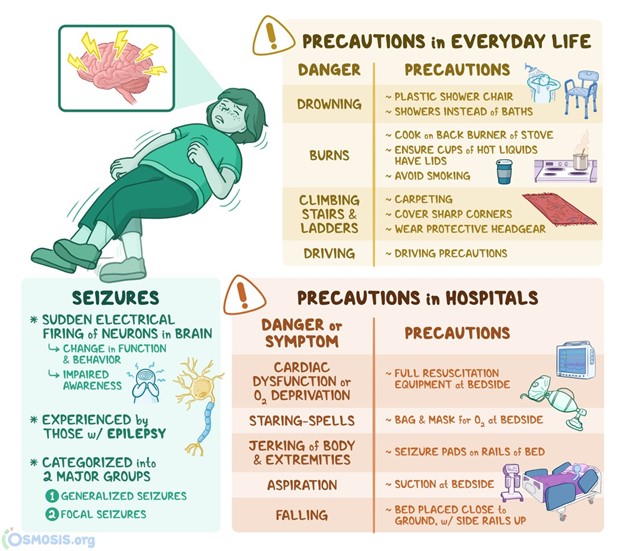A nurse is caring for a client who is immobile.
Which of the following interventions is appropriate to prevent contracture?
Align a trochanter wedge between the client’s legs.
Apply an orthotic to the client’s foot.
Place a towel roll under the client’s neck.
Position a pillow under the client’s knees.
undefined
The Correct Answer is B
The correct answer is choice B. Applying an orthotic to the client’s foot.
An orthotic is a device that supports or corrects the function of a body part.
In this case, an orthotic can help prevent foot drop, which is a common contracture deformity in immobile patients.
Foot drop occurs when the muscles that lift the foot become weak or paralyzed, causing the foot to hang down at the ankle. An orthotic can keep the foot in a neutral position and prevent shortening of the calf muscles and Achilles tendon.
Choice A is wrong because a trochanter wedge is used to prevent external rotation of the hip, not contracture. A trochanter wedge is a triangular-shaped pillow that is placed between the legs to keep them parallel and aligned.
Choice C is wrong because a towel roll under the neck is used to maintain proper cervical alignment, not contracture. A towel roll can prevent hyperextension of the neck and support the natural curve of the spine.
Choice D is wrong because a pillow under the knees can actually cause contracture of the knee joint by keeping it in a flexed position. A pillow under the knees can also reduce blood flow to the lower extremities and increase the risk of deep vein thrombosis.
Contracture is a permanent tightening of the muscles, tendons, skin, and surrounding tissues that causes the joints to shorten and stiffen.
Contracture can limit the range of motion and function of the affected body part. Contracture can be caused by inactivity, scarring, or diseases that affect the muscles or nerves. Prevention of contractures requires early diagnosis and initiation of physical medicine approaches such as passive range of motion exercises and splinting before contractures are present or while contractures are mild.
Nursing Test Bank
Naxlex Comprehensive Predictor Exams
Related Questions
Correct Answer is C
Explanation

Hyperthermia is a condition in which the body temperature is abnormally high, usually due to exposure to heat, infection, or certain medications.
Hyperthermia can cause neurological complications, such as seizures, confusion, or coma. Therefore, the nurse should initiate seizure precautions for an adolescent who has hyperthermia to prevent injury and protect the airway.
Choice A is wrong because covering the adolescent with a thermal blanket would increase the body temperature and worsen hyperthermia. The nurse should remove excess clothing and use cooling measures, such as fans, ice packs, or cool fluids.
Choice B is wrong because submerging the adolescent’s feet in ice water would cause vasoconstriction and shivering, which would reduce heat loss and increase heat production. The nurse should avoid using extreme cold or ice water to cool the body.
Choice D is wrong because administering oral acetaminophen would not be effective for hyperthermia caused by non-infectious factors, such as heat exposure or medications.
Acetaminophen lowers the body temperature by reducing the hypothalamic set point, which is not altered in hyperthermia. Additionally, oral medications may be difficult to swallow or absorb in a hyperthermic patient.
Normal body temperature ranges from 36.5°C to 37.5°C (97.7°F to 99.5°F). Hyperthermia is defined as a body temperature above 38.5°C (101.3°F).
Correct Answer is D
Explanation
The correct answer is choice D, a noncoring needle.
A noncoring needle is a special type of needle that has a beveled tip and a side hole. It is designed to prevent damage to the port’s septum, which is the soft silicone top that serves as the vein access point.
A noncoring needle also reduces the risk of infection and clotting.
Choice A is wrong because a butterfly needle is a small, winged needle that is used for peripheral venous access, not for accessing a port. A butterfly needle can damage the port’s septum and cause leakage or infection.
Choice B is wrong because an angiocatheter is a thin, plastic tube that is inserted into a vein using a needle.
It is used for short-term IV therapy, not for accessing a port. An angiocatheter can also damage the port’s septum and cause complications.
Choice C is wrong because a 25-gauge needle is too small to access a port.
A 25-gauge needle is typically used for subcutaneous injections, not for intravenous injections. A 25-gauge needle can also clog the port or cause hemolysis (breakdown of red blood cells).
Normal ranges for ports vary depending on the type and size of the port, but generally they have a reservoir diameter of 1.5 to 2.5 cm, a catheter length of 40 to 60 cm, and a catheter diameter of 0.8 to 1.2 mm. Ports are usually flushed with saline or heparin solution every 4 to 6 weeks when not in use to prevent clotting.
Whether you are a student looking to ace your exams or a practicing nurse seeking to enhance your expertise , our nursing education contents will empower you with the confidence and competence to make a difference in the lives of patients and become a respected leader in the healthcare field.
Visit Naxlex, invest in your future and unlock endless possibilities with our unparalleled nursing education contents today
Report Wrong Answer on the Current Question
Do you disagree with the answer? If yes, what is your expected answer? Explain.
Kindly be descriptive with the issue you are facing.
